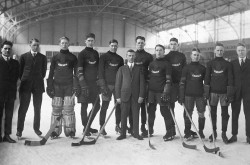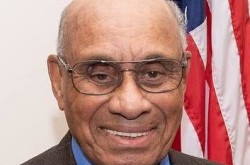Table Hockey: From Munro Games to Eagle Toys to Coleco
This article was originally written and submitted as part of a Canada 150 Project, the Innovation Storybook, to crowdsource stories of Canadian innovation with partners across Canada. The content has since been migrated to Ingenium’s Channel, a digital hub featuring curated content related to science, technology and innovation.
Munro Games
In 1932, at the height of the Great Depression, Don H. Munro of Burlington, ON, built a mechanical table hockey game as a present for his family, using bits and pieces of material found around his home. The result was popular with his own children, and once it found its way to market, the family was kept busy satsifying the demand for the games. Munro was loaned the money to purchase the first saw he used, the goalie nets were hand-crocheted by Edith Munro, and the Munro children helped out as needed. Although the Munro hockey game was tweaked slightly over the years, the basic premise of a surface, peaked at the centre, with pinball-like pegs to push the steel ball towards the opponnent’s net, continued to enchant. Today Munro games are collectible, and are still used by table hockey enthusiasts.
Eagle Toys
An early table top game developed by the Canadian company, Eagle Toys Ltd., replaced the Munro game pegs with recognizable hockey players, but they still rotated on their axes. Meanwhile, in Sweden, rod-hockey table-top games had been invented, allowing the “players” to move up and down the “ice”. Bill Kobayashi, who joined Eagle Toys in 1955, adapted the Swedish design, attaching the players to the under-surface of the ice with metal gliders, so that they could move more fluidly. The company continued to accessorize their games with NHL names and logos. In the 1980s Coleco bought Eagle Toys, but the basic design remained relatively unchanged, and may still be found in your basement!

















